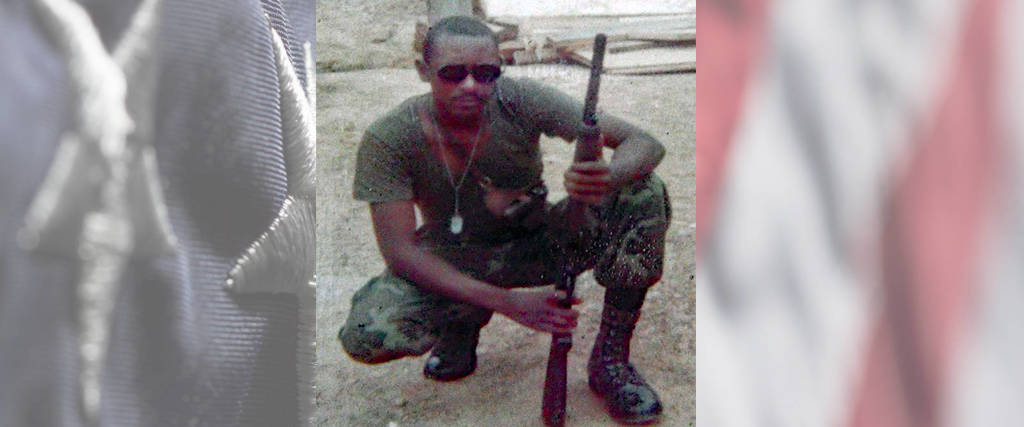Marine Corps Vietnam Chicago, IL Flight date: July, 2019
By Donna Pacanowski, Honor Flight Chicago Veteran Interviews Volunteer
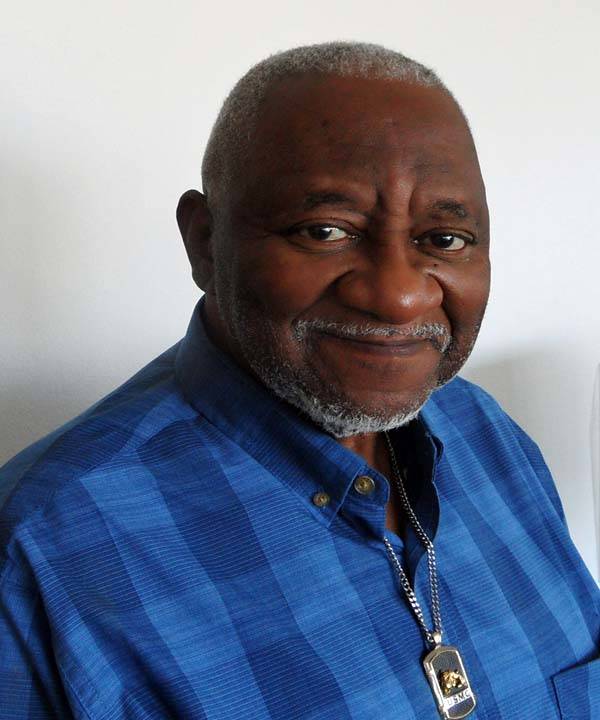
James T. Blue, Sr., ”Blue”, was born on January 4, 1947, in Elmore, Alabama. When only a baby, his parents moved him and two older brothers to Robbins, Illinois. Later, the family settled on the West Side of Chicago, near Kedzie and Monroe. Here he met lifelong friends from his youth in the ’50’s and ’60’s. It’s also when Blue developed his distinctive walk that made him recognizable from a distance. He and his friends hung out together throughout high school at Marshall, always eager to meet girls. But Blue had a plan. Since a lot of girls took typing class, he signed up for typing to get to know those girls. He was one-up on his buddies! Blue graduated from Marshall H.S. in 1966 as the American involvement in Vietnam was starting to escalate.
In 1967, one of his best friends, Robert Gurley, was drafted. Without Robert to hang around with, Blue was lost. A few months after Robert entered the Army, Blue looked into enlisting. He didn’t like what the Army was offering, and after some thought, he enlisted in the Marine Corps. Blue received Basic and Rifleman Training at Camp Pendleton. Before Marines are sent into a combat area they receive additional training called ”staging,” specific to the combat zone they would be entering. Several times, Blue and other Marines got “staged” but while most were sent to Vietnam, Blue and a few other Marines were administratively assigned to motor pool duties. Later, Blue learned that U.S. Military policy prevented assignment to combat areas of certain individuals, including members of the same family in combat zones, those too young for combat duty or disqualified for other reasons. Blue’s older brother was already serving in Vietnam. It was also here that Blue would meet Ulysses “Baby Boy” Chapman, a good friend, but too young to go into combat.
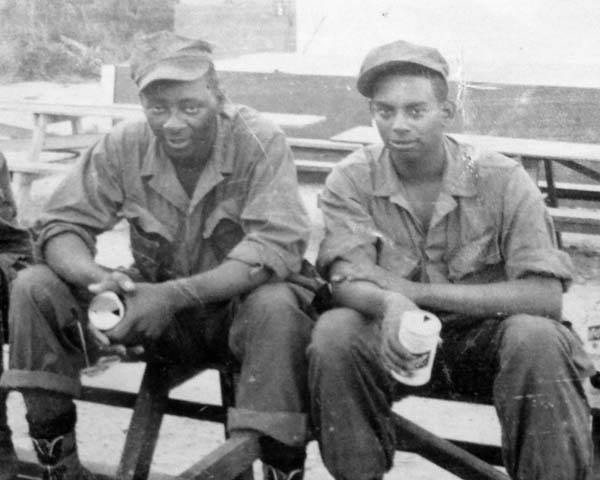
In December 1968, with his brother now returned from Vietnam, Blue finally received his own orders. He flew from El Toro, California, to Hawaii; then his plane was diverted to Okinawa because the Da Nang airport was damaged by heavy shelling. After several days in Okinawa, Blue boarded a plane to finish his journey to Vietnam. Da Nang is located on the coast in “I” Corps near the DMZ of South Vietnam. The country is at its narrowest, about 40 miles, in this area. The region begins with a fertile flat coastal plain, followed by jungled foothills and backed by the mountains to the Laotian border. His company was located in the lowlands west of Da Nang. The area was mostly rice paddies, scattered tiny villages of farmers and occasional bamboo groves, crisscrossed by footpaths and trails. Malaria-infected mosquitoes were a constant danger to the troops. DEET spray defended them against mosquitoes and malaria pills were used to prevent the sickness. Because of the flooded rice fields, the constant infestation of mosquitoes multiplied in the area. Many troops had casualties of malaria. During his tour in Vietnam, Blue came down with a severe case of malaria which hospitalized him for over two months.
Upon arrival in Da Nang, Blue was assigned to D company 1st Battalion, 26th Marines, as a Rifleman. The unit was located on Hill 190 and the surrounding area. From that base, smaller units were sent out for recon and ambushes. Blue saw his first combat action on one of these ambushes. The memories of that first combat action are still vivid today, as he continues to struggle with PTSD.
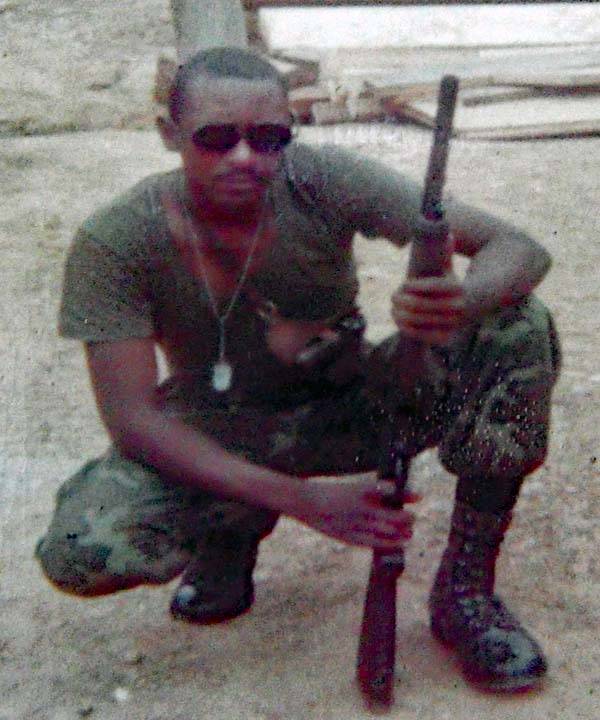
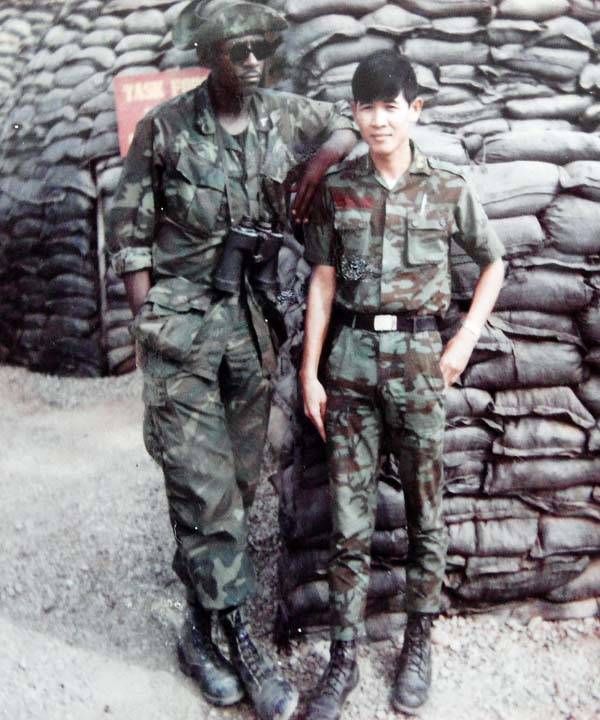
Several months later, Blue transferred to “I” company 3rd battalion, 5th Marines at An Hoa. An Hoa is located about 25 miles southwest of Da Nang. During the day, the local men and women continued working in the rice paddies, tending the vegetable beds, watching over the farm animals, and enjoying their children. At night, the people retreated to the safety at their homes in the villages, and the area became infested with Viet Cong. “I” company’s mission was to prevent supplies from reaching the VC. Every day as evening approached, the company would move to a bivouac area away from the villages into free fire zones. Preparations were made for night defenses including digging foxholes and patrols scouting locations for night ambush sites. As darkness approached, several squads moved to positions on trails known for VC supply and infiltration routes. The squad deployed along a trail and set up an ambush. Once set, the ambush meant silence and vigilance. If the VC entered that portion of the trail during the night, the ambush would be sprung, Claymore mines were detonated, followed by machine gun and rifle fire. No two nights were alike; different areas were chosen so that VC could not anticipate where the ambushes were sited.
After several months of the constant stress of firefights, Blue got the opportunity to work in Battalion Intelligence (S2). This got him out of the field, into a position where he worked with information gathered from multiple sources. These included villagers, captured VC and NVA troops, captured documents, and reconnaissance sources. Those typing classes at Marshall High School came in handy once again; soon he was typing faster than the Marine clerk-typists that had trained for the job.
At the end of his tour, Blue returned to Chicago and relapsed again with severe malaria. He was rushed to Hines VA Hospital where a spinal tap was performed. He spent 21 days in the hospital. Blue continued serving in the Reserve component of the Marine Corps in the Chicago area. He was assigned to various units and advanced through the ranks to become a staff sergeant. During the first Gulf War, his reserve unit was called back to active duty. Blue was asked by the Marine Commandant if he wanted to see combat again. Blue agreed, and flew to Camp Pendleton, but the war ended before he could leave the USA.
In his civilian life, Blue took Federal Police Training in Little Rock, Arkansas. He worked as a Police Officer at Hines VA Hospital. He then served with Rush University Campus Police for about 30 years. While there, Blue met Regina who worked at Rush Medical Center as a patient advocate. As a Marine, he was attracted to her shiny shoes! Finally, in 2014, he proposed to her and they were married. In their free time, he and Regina enjoy traveling and attending veteran’s events. Blue continues to serve by helping veterans through the AA Post Traumatic Stress Disorder Association. Blue also enjoys spending time with his two adult children and especially his two-year-old granddaughter.



